#Pedestrians Signs Edinburgh
Explore tagged Tumblr posts
Text






On October 1st 1763 the contract to build Edinburgh’s North Bridge was signed.
Edinburgh in the 1700′s was a very different city to the one we know today. The city boundary was restricted to the dramatic crag and tail feature which swept eastwards from the castle. Up to 35,000 people inhabited a space under a mile long making Scotland’s capital one of the most densely populated urban areas in the world at that time. The overcrowded population were crammed into crumbling tenements, many of them up to fourteen storeys high in order to make the most of the limited space. Make no mistake, Edinburgh at this point in it’s history, was a skyscraper city, very few cities in the world had buildings the height of our capital!
Edinburgh’s nobility were often forced to accept the unthinkable and share dwellings with the lower classes. Change was not just desired, it was deemed an absolute necessity if the city was ever to move forward.
Plans to build a New Town to the north were discussed as early as the 1750s but without the means of connecting it with the rest of Edinburgh, it would be nothing more than a fanciful dream. Phase one required the draining of the ancient Nor’ Loch, a man-made stagnant body of water located in the area which we now term as Princes Street Gardens. Drainage began in 1759 and would continue up until the 1820s. Dry land at the east of the Nor’ Loch valley allowed for what was undoubtedly the most ambitious engineering project to have been built in the city at that point: An eleven-hundred foot long stone bridge. The North Bridge, as it would be named, enabled the New Town to become a reality. A brand new chapter in the city’s history was about to begin.
The foundation stone of architect William Mylne’s North Bridge was laid in October 1763 but it would be a further two years before any serious amount of progress was made. The magnificent multi-arched bridge first opened to pedestrians in 1769 to much fanfare and excitement. However, the cheers quickly died down in August of that year when a partial collapse claimed the lives of five people. Haste in construction and a poorly calculated estimate regarding the depth of the foundations were said to have been the primary cause. Rebuilding work demanded £18,000 (almost double the original cost of the project) and the city would have to wait until 1772 before the grand reopening.
The North Bridge consisted of three main arches and several smaller arches, many of them concealed, on either side. After the bridge’s final completion, building work on the first residences of the New Town would commence within five years. Edinburgh would go on to expand like never before as the world’s largest Georgian townscape began to take shape.
The much-anticipated bridge was only to last a little over a century. Redevelopment and expansion of Waverley train station was being held back by the narrow space available between the piers of the North Bridge. It was becoming obvious that a new link was needed. Construction of the current steel bridge that we know today was completed in 1897 at a cost of £81,000. The North British Railway Company contributed to a third of the cost.
There are now several bridges in the city but it is the North Bridge which is most visible. Today the bridge continues to play a vital role in dictating the ebb and flow of the city, much as it has done for the past 240 years and at the moment work is continuing on a major restoration after defects were discovered in 2014, the work which was to cost an estimated £22 million, since then there have been several delays and the estimated cost, as of May this year is £86m The council say "multiple structural and safety defects" were identified."
The latest is work is now expected to be completed in 2025 - five years behind schedule.
8 notes
·
View notes
Photo

A & S Brown provide quality Road Barriers services including Installation of Pedestrian Barries, Road Signs, Pedestrians Signs, Road Barriers, and Waterturbine Groundworks. If you have any questions please feel free to contact us.
#Installation of Signs Edinburgh#Adjustment of Signs Edinburgh#Agricultural Contractors Edinburgh#Mini Digger Hire Edinburgh#Road Signs Edinburgh#Pedestrians Signs Edinburgh#Pedestrian Barries Edinburgh#Installation Of Road Barriers Edinburgh#Installation Pedestrian Barries Edinburgh#Installation Road Signs Edinburgh#Road Barriers Edinburgh
0 notes
Photo

Our company provides the best Installation Pedestrian Barriers, Installation Road Sign, Pedestrian Barries, Agricultural Contractors & Road Barriers in Aberdeenshire. We are not only situated in Aberdeenshire, but we also have branches at Murray, Dundee, Edinburgh. It is the base foundation place of agricultural contractors. Please contact A & S Brown for various types of groundwork related to agricultural contractors in Aberdeenshire.
#agriculturalcontractorsAberdeenshire#RoadSignsAberdeenshire#PedestrianBarriesAberdeenshire#InstallationRoadSignsAberdeenshire#MiniDiggerHireDundee#PedestrianBarriesEdinburgh#InstallationRoadSignsEdinburgh
1 note
·
View note
Text
Post-Production: Optimisation
24/05/21
Workflow Process
After shooting my chosen building, the National Museum of Scotland in Edinburgh, for the Structure brief I had to go through the images and select the strongest images in terms of composition and correct exposure as well as the images that I felt would portray the architectural vision and enhance the structure. The workflow process I went through to create contact sheets and star rate the images is the same process after each shoot, here are the mains steps summarized:
Open images form SD card into Adobe Bridge and rename the selected images for this project using the batch rename tools. Review the images in the Filmstrip tab and use the star rating system to select the strongest images. Go to the output tab to create contact sheets of the highest rated images and export as a PDF. Then move the RAW files of the top-rated images into a new folder to be optimized in photoshop.
Optimization and Perspective Correction
Image 01 – Wide Exterior (modern extension)
Camera Raw Adjustments:
- To edit this image, I opened the file into camera RAW where I made small adjustments to the sliders for exposure and contrast under the ‘Basics’ tab.
Photoshop Adjustments:
- Perspective Correction (Layer 1) - With the images opened in photoshop where I duplicated the background layer and renamed it ‘perspective corrections’. I used the ruler guides to make vertical and horizontal guide lines across the images. To correct the barrel distortion of this image I went to the edit tab and selected Transform > Distort. Using the blue anchor points to move points at the top of the image that aligned the verticals of the building with the vertical ruler guides.
- Crop (layer 2) – I decided to make a small crop to the wide exterior shot as there were a few objects such as cars at the edge of the frame that wouldn’t be easily removed, and because I shot slightly wider than I needed to there was still enough room for the building to fi tin frame after a small crop was applied. I used the rule of thirds
- Clean Up (layer 3) – I decided to remove any areas of the images that were distracting from the subject of blocked the view of the structure, such as: signs, lampposts, pedestrians, bikes, birds and other marks on the ground or on the building. The tools I used to make these changes were the content aware tool, to use this I made a selection around a subject using either the quick select or lasso tool and then apply the content aware tool found in the ‘Edit’ tab. This tool allows you to select which areas around the selection that can be used to fill in this area. I also used the spot healing and clone stamp tool to clean up areas where the content aware fill was used as well as on pedestrians, signs and blemishes.
- Colour Grading (adjustment layers) – After making major adjustments to perspective, crop and removing areas of the image I could then apply a colour grade and used the curves tool to increase the contrast and add depth. I decided to apply the ‘fall colours’ colour grading, reducing this layer to around 30%, I felt that this colour grading enhances the beige tones within the stone and brought back warmth into the image. This colour grading would be applied to all 5 images.



Image 02 – interior shot (modern extension)
Camera Raw Adjustments:
- Basic Adjustments: I used the sliders for the exposure and highlights as the majority of this image are white/beige tones.
- Perspective Correction: In the geometry tab I used one of the perspective corrections tool which aligned all the vertical and horizontal lines. I chose this specific tool because the composition included geometric shapes that were mostly squares and rectangles.
Photoshop Adjustments:
- Clean up (Layer 1) – After duplicating the background layer I used the clone stamp tool to remove a few vents and one person from in frame that.
- Adjustment Layers – I applied the ‘fall colours’ preset in the colour look up adjustment and reduced the opacity to around 30%. Then used the curves tool to increase the contrast.

Image 03 – Exterior close up (modern extension)
Camera Raw Adjustments:
- Basic Adjustments – again, I used the sliders in the basics tab to adjust the exposure, contrast and highlights.
- Perspective Correction - Then went to the geometry tab and used the rule of thirds perspective correction tool to align vertical lines and straighten the image.
Photoshop Adjustments:
- Crop (layer 1) – I decided to make small crop on this image to bring more attention to the geometric shapes of the windows and the texture of the stone bricks.
- Clean up (layer 2) – I used the spot healing and clone stamp tool to remove distracting marks and CCTV cameras from the building.
- Adjustment layers – again, I applied the ‘fall colours’ preset and used the curves tool to increase contrast and emphasis the textures within the structure.

Image 04 – Wide interior shot (main hall, old building)
Camera Raw Adjustments:
- Basic adjustments – I reduced the overall exposure to flatten the image slightly and because the location was lit by glass windows on the rood the entire room is white, I felt it would be easier to remove distractions and then increase the contrast again afterwards.
Photoshop Adjustments:
- Perspective correction (layer 1) – It took a few attempts to correct the perspective and I explored a few tools from lens correction, adaptive wide angle, the crop tool using guide lines and the transform>distort and perspective warp tools. I found that by using guide lines alone they key verticals and a few horizontal lines along with the perspective>distort tool I could push and pull the anchor points to correct the pin-cushion distortion.
- Clean up (layer 2) – On a new layer I made use of the clone stamp, patch tool and the spot healing tool to remove a few people, COVID signage and other distractions such as barriers and bins.
- Adjustment layers – I then applied the ‘fall colours’ colour grading and applied a curves adjustment to increase the contrast.


Image 05 – Exterior close up (old building)
Camera Raw Adjustments:
- Basic adjustments – I increased the exposure and contrast using the sliders in the basics tab as well as reducing the noise.
- Perspective correction – I used the 4 panel adjustment tool to straighten the image as it was shot at a slant and a low angle despite using a tripod.
Photoshop Adjustments:
- Adjustment layers – I didn’t need to clean up any areas of this image, so I applied another curves adjustment and then the ‘fall colours’ colour grading.

1 note
·
View note
Text
BDP Architecture Practice Information + News
BDP Architects Offices, Building Design Partnership News, Studio Designs, UK Practice
BDP Architecture Office
International Architects Practice – Buildings + Designs: Office News Updates
BDP Projects Information
BDP : main page with current news
BDP Architects : recent information on Building Design Partnership
Older Projects by BDP – Building Design Partnership
Recent BDP News
7 Oct 2021 BDP returns to Edinburgh with Pattern acquisition photo courtesy of architects office BDP returns to Edinburgh with Pattern acquisition BDP’s recent acquisition of the specialist sports and stadia architecture firm, Pattern Design – the practice delivering Everton FC’s new £500 million waterfront stadium – results in BDP’s return to Edinburgh. Previously, BDP held an Edinburgh office from 2008 to 2011. The new Edinburgh studio expands BDP’s presence in Scotland and coincides with BDP’s successful completion of the £1bn St James Quarter development.
photo © Isabelle Lomholt
2012 BDP is again top in Western Europe
BDP has again come top – by fee income – of the Western Europe chart of the WA100 2012 survey of the world’s largest architecture practices, a position the practice has held for over 10 consecutive years.
The UK is still the firm’s largest market but China and India are growing substantially and for the practice, many of its key projects are to be found in Asia, including: the masterplanning of a sustainable city of 160,000 people in Hua’an China; two masterplans in Kerala, India; one for the Indian Institute of Technology in Mandi; and one in Suzhou, China.
Peter Drummond, BDP’s Chief Executive said “These are the most extraordinary times that we have experienced at any time in our 50 year history. There is an enormous contrast in dealing with economic uncertainty and lower investment in social infrastructure in the west with massive investment in markets such as India and China. But we believe that our distinctive humanistic approach to architecture and placemaking creates a strong position for BDP in both circumstances.”
15 Oct 2011 BDP’s Shanghai studio moves to larger premises
As part of a long term strategy for continuing to work in China and accommodate a larger design team BDP has moved into larger premises, still in Shanghai.
image from BDP Architects
BDP has been involved in China since 2007 and opened a studio at the end of 2010 to support this work and win further projects across the sectors.
Since then, the practice has successfully won a number of major developments ranging from urban regeneration masterplans through higher education, cultural and leisure facilities to retail and housing right across China including Beijing, Foshan, Hangzhou, Lanzhou, Nanjing, Shanghai and Suzhou.
The head of BDP’s Shanghai Studio, Stephen Gillham, said “To support BDP’s vision for China, our expanding portfolio and our growing design team, we are moving from premises which we had already outgrown to a brand new building nearby in Shanghai’s Luwan District from where we will be able to provide even stronger solutions for our clients.“
BDP’s new address: 17 Urban City Centre, 45 Nanchang Road, Luwan District, Shanghai, 200020, China Tel +86 (0)21-61962500 Fax +86 (0)21-61962501
11 Jul 2011 BDP – Appointment Architect Scott Mackenzie has been appointed to BDP’s board of directors. Scott has significant experience in the education sector and his appointment will strengthen the leadership in the Glasgow studio. He is currently working on new build facilities for both Inverness and Kilmarnock Colleges and the University of Strathclyde’s Technology Innovation Centre. He is also project director for the Robert Gordon University Garthdee Campus, which involves the consolidation of the University’s estate at a stunning campus on the banks of the River Dee. Scott joined BDP in 1999 and has been a director since 2006.
Placebook As BDP is 50 this year they have created a blog to celebrate all the lovely projects created over the last 50 years. BDP are asking people to nominate their favourite BDP project on their Placebook blog. The blog encourages people to discuss, vote on, and nominate their favourite BDP buildings and projects. Placebook started out as a simple idea to introduce current BDP designers to the history and diversity of work over the first 50 years. Such was the reaction to the idea, BDP have opened it up to former colleagues, friends, clients, contractors, journalists or anyone who may ever have enjoyed spending time in one of their buildings.
6 May 2011 BDP Cyclists set off in Aid of UK Charities At 9.20am this morning more than 30 cyclists set out from BDP’s London studio in Clerkenwell aiming for the studio in the Netherlands via Harwich on the first leg of the relay cycle ride which will involve over 200 riders from BDP on a tour around all of its studios in the UK, Ireland, and the Netherlands.
BDP Cycle for Jo London Send off: pictures : Sanna Fisher-Payne, BDP
They were given a huge send off preceded by short speeches by Martin Houghton-Brown Chief Executive of charity Missing People and BDP Chief Executive Peter Drummond.
BDP – the UK’s leading interdisciplinary design practice – launched ‘Cycle for Jo’ a fundraising challenge in honour of the landscape architect from BDP’s Bristol studio, Jo Yeates, who went missing and was tragically found dead on Christmas Day.
The first team left BDP’s Clerkenwell studio in London today and the last team will arrive back in London on 25 May. Members from BDP studios in Abu Dhabi and India have also joined by cycling in their local areas.
In his speech BDP’s CEO Peter Drummond said, “Cycle for Jo is our way of marking and remembering (Jo’s) too short a life with us. And it is so fitting that the idea of a tour de BDP should come from a group of young people in the firm – the decision to dedicate it to Jo and raise money for causes that she believed in and the charity Missing People was a no-brainer.”
As part of a series marking BDP’s 50th anniversary, “Cycle for Jo” will raise funds for the charities Missing People, the British Red Cross and RSPCA.
11 Feb 2011 BDP wins Kuwait Masterplan
BDP has successfully bid for a transport and planning framework masterplan for the Salmiya district of Kuwait City; the formal signing of the 14 month contract, with a value in excess of £2m, took place in January. Salmiya district is an existing urbanised area on the Gulf Coast of approximately 20 sq km. Growing congestion, pressures for redevelopment and a recognition of the existing poor quality of place have led the Kuwait Municipality to commission this work which will set in place the infrastructure, planning and design guidelines to enable the transformation of the district over the next 15 years.
BDP has been challenged to create a sustainable masterplan for Salmiya district to keep it car-friendly, but also flexible for future growth. This will include more strategic siting of any new public works such as schools, universities and hospitals in relation to residential zones, plans for improved public transport provision, and better all-round pedestrian access to Salmiya’s shops and civic amenities.
In addition the BDP-led Salmiya masterplan will work in harmony with the third Kuwait masterplan known as 3KMP. The 3KMP is an umbrella development strategy for the whole of Kuwait which is designed to help cope with the intensive economic and population growth anticipated in the region over the next 20 years.
Francis Glare, BDP’s head of urbanism said “We would like to acknowledge the importance of the collaboration with our local consultants OBD and their contribution to the winning of this project. We believe this will be a growing area of work for us, as a new place-making approach starts to be applied to first generation Middle Eastern cities. The BDP approach is particularly relevant to the cities and societies of the Middle East as they move on from North American driven models of city planning dominated by traffic engineering.”
3 Feb 2011 Remembering Jo Statement from Keith Pavey, Head of BDP’s Bristol Studio
“It is now over seven weeks since Jo was so tragically taken from us and it is still difficult to come to terms with her untimely and unnecessary death.
We have been overwhelmed by the many messages of condolence and sympathy we have received from our clients and colleagues in the construction industry. We are certain that there will be many lasting tributes to Jo from many directions but for our part at BDP we have concluded that we will progress the following:
• The creation of a small garden of remembrance at our Bristol studio. • The sponsorship of an annual Landscape Design prize in Jo’s memory for students at the University of Gloucestershire School of Landscape and Environment. • The creation of a Book of Remembrance to include an anthology of Jo’s work. • The dedication to Jo of a cycle ride between BDP offices, planned to take place in late spring as one of several events to mark BDP’s 50th anniversary, with the proceeds from sponsorship going to charities of Jo’s parents’ and Greg’s(Reardon, Jo’s boyfriend) choice. We will not forget Jo and we hope the above will collectively become a lasting tribute to her.”
11 Oct 2010 BCO Awards BDP won twice at this year’s British Council for Offices Awards in London. The fit-out for PricewaterhouseCoopers at 141 Bothwell Street, Glasgow was national winner of the Fit-out of Workplace Award, and West Lothian Civic Centre, Livingston was winner of the National Innovation Award. Presented by actor and trained designer Ronni Ancona, the awards are considered to be one of the most prestigious events in the corporate real estate calendar attracting over 1,000 key players in the office industry sector.
Of the PwC project the judges said: “This year’s national winner of the Fit-out of Workplace Award is a quality fit-out that betrays no signs of opulence or financial exuberance and outstanding value for money.
Fundamental to any successful fit-out is the new environment’s ability to contribute to the well-being and productivity of the workforce. It was clear to the judges that BDP’s fit-out fully met these criteria. PwCs’ fit-out illustrates a keen understanding of its corporate and staff needs and displays its sophistication as a client. The accurate delivery of the client’s brief by the professional team has brought the entire project together.”
Awarding West Lothian Civic Centre the National Innovation Award, the judges said: “This new home for public sector services in West Lothian accomplishes two significant achievements: providing an impressive and aesthetically pleasing building that betrays none of the traditional dourness or conformity of the customary public sector edifice, and innovatively combining a number of hitherto separate public services in one dynamic modern and efficient building.” All entries are considered automatically for the Innovation Award as part of the assessment process with the regional judges nominating entries from their region to be put forward.
BDP Abu Dhabi BDP Abu Dhabi
RIBA Hat Trick for BDP BDP collected three prizes in the RIBA Awards. BDP’s northern studios featured strongly with wins for the masterplan for the regeneration of Liverpool city centre, known as Liverpool One, for its own studio in Manchester’s Ducie Street and also for a new five storey office building in Sheffield – 1 Northbank, the top floor of which is, coincidentally, also the home of BDP’s own Sheffield studio. 21 May 2009
New Environment and Sustainability Institute, Cornwall, England Tremough Campus Building. 13 Aug 2009
Liverpool One Award, UK : BCSC Award photo © David Barbour/BDP Liverpool One Masterplan. 3 Dec 2009 Stirling Prize Nominee
Civic Trust Awards 2009 The Royal Alexandra Children’s Hospital in Brighton and Victoria Square in Belfast both received top awards : BDP Triumphs At Civic Trust Awards
Location: London, England, UK
Building Design Partnership : main page arranged chronologically
London Architects
Building Design Partnership Projects – No Images
Aintree racecourse – Grandstand, nr Liverpool, England 2007
Archway Masterplan, north London 2007-
Bournemouth Library, Dorset, England 2003
Buchanan Galleries Atrium building – proposal, Glasgow, Scotland 2007- Buchanan Galleries
Cardonald College, Glasgow, Scotland Cardonald College
City College, Brighton, East Sussex, England 2007
Fingal County Offices, Swords, County Dublin, Ireland 2002 Bucholz McEvoy with BDP Dublin £9m
Hale redevelopment, Tottenham Hale, Haringey, northeast London, UK 2007 Mixed -use development: residential; commercial; retail; hotel; student accommodation; primary school; health centre
Leamouth school, east London, UK 2008- For Ballymore Properties: within six lower floors of tower building
Manchester Piccadilly Station Refurbishment, England –
The Marlowe Academy, Ramsgate, Kent, England –
National Maritime College of Ireland, Cork, Ireland 2004 BDP Dublin
Roche Head Office, Welwyn Garden City, Hertfordshire, England –
Sao Gabriel towers – Vasco da Gama centre, Lisbon, Portugal –
Swansea masterplan, Wales Welsh proposal
Überseequartier, Hamburg, Germany 2007-09 110,000 sqm office / retail development
Union Square masterplan, Aberdeen, Scotland 2007- Shopping centre
University of Wales campus, Newport, Wales 2008-
University of Worcester – New Campus, England 2006-
Waterfront City, Melbourne, Australia –
More projects by Building Design Partnership online soon King’s Buildings – South Range: Smirke Building, King’s College London 1830s Robert Smirke Grade I Listed, Strand Campus – restoration: 2006 – Building Design Partnership
Architectural Designs
London Architect
London Architecture
English Architects
Architecture Studios
Buildings / photos for the BDP Architecture – Building Design Partnership page welcome
Website: www.bdp.com
The post BDP Architecture Practice Information + News appeared first on e-architect.
0 notes
Photo




Green and fun- between Strathclyde and St Andrews Universities by train and bike...
It was a beautiful clear few days in early February, and I had signed up for an event at St Andrews University to learn about some of the techniques and uses of ethnographic writing in academic research (a method of studying people and cultures from the point of view and context of a specific group or individual).
An approach mostly used by anthropologists and sociologists, it’s perhaps not one generally associated with accounting research. However, I suppose it indicates the interdisciplinary nature of my work, and where I hope to potentially consider the use of such techniques in my sustainability accounting research on water access in rural communities in Malawi.
I thought it would be nice to use some alternative and more sustainable means of transport to travel from my institution, Strathclyde University in Glasgow, to the event at St Andrews on the Scottish east coast- and, of course, in which I could incorporate my trusty bike. Understanding there were a couple of routes I could take, I had booked my bike on a train to Dundee (the need to book a bike on Scottish trains is variable depending on the route- it’s always best to check ahead) on the day before the course. A light flurry of sleet overnight in Glasgow had clearly been heavier out with the city, and a fresh blanket of snow covering the countryside and mountains, coloured by some late afternoon sunlight, is a bonus to a train trip in Scotland at this time of year. Alighting at Dundee I had the choice to then cycle the 25 km to St Andrews, or take a connecting train to Leuchars and pedal the shorter 10 km to the town.
With the sun fading, and keen for the chance to spend a little time in Dundee, I opted for the latter. Leaving my bike at the station, I walked along to the newly built V&A museum on the waterfront- which was looking especially handsome in the late sunshine as it awaits its opening later this year. One stop on the train across the Tay bridge (the road bridge can be cycled over) to Leuchars is a signposted and traffic-free cycle route (a combination of separate cycle paths and shared pedestrian and cycle pavements). Away from the road traffic this is a safe route to the town (but bike lights are nonetheless necessary if cycling at this time of year!).
After staying in the town overnight, a crisp cold morning was an ideal opportunity to make use of having my bike with me, and I pedalled down to the old harbour before heading for breakfast and then to the university via the ‘Home of Golf’s’ famous ‘Old Course’.
Following a full day of insightful sessions at the workshop, I could reflect on how I could potentially incorporate some ethnographically inspired research into my own work as I cycled back to Leuchars to catch an alternative train route via Edinburgh back to Glasgow. In doing so I met a fellow attendee from the day’s event at the station (I had managed to travel the 10 km to the train station quicker than her connection via bus from the town), and highlighting another benefit of travelling by public transport, we got the chance to talk about the course in relation to our individual research and work (Furthermore, we experience a lovely moment where 3 swans flew alongside our train as we travelled along a valley...)
However, connecting at Edinburgh did highlight one the issues with travelling by bike and train in Scotland. With our train having only 3 rather than 6 carriages as expected, capacity was tight for passengers and what is normally pretty restricted availability for bikes was further limited. While I got my bike on, other cyclists really struggled to board, and at least one individual had to be turned away. Arriving in Glasgow I then had the short cycle home- and had made it from the university in St Andrews to my house in under 3 hours. Not only had I undertaken a more sustainable means of travel that aligned with my institution and department’s recent increased commitment to sustainability practice by staff and students, but I had enjoyed what also had been a fun and memorable experience.
Images:
Top left: The impressive V&A museum in Dundee, to open later this year...
Top right: Pretty standard bike accommodation on trains in Scotland
Bottom left: A beautiful sunset to cycle from Leuchars to St Andrews
Bottom right: Morning sunshine on the Old Course
#sustainability#sustainable travel#university of strathclyde#university of st andrews#st andrews#cycling#bike and train#sustainable mobility#fife#dundee#old course
15 notes
·
View notes
Photo








Photos from Day 5 in Edinburgh
(mostly from Doune Castle, outside of Edinburgh)
Top row: exterior of Doune Castle (where parts of “Monty Python and the Holy Grail” were filmed); coats of arms adorning a wall inside the castle
Second row: a fancy old chair in the castle; gargoyles
Third row: a double rainbow (I need to read more about polarised lenses and rainbows. If I turned my head (wearing my sunglasses), it made the fainter rainbow brighter and vice versa!); someone’s garden in the village of Doune; pedestrian bridge over the train tracks in Stirling
Fourth row: tabletop at The Jolly Botanist (the gin bar with the cool sign outside)
6 notes
·
View notes
Text
Kinnoull Hill
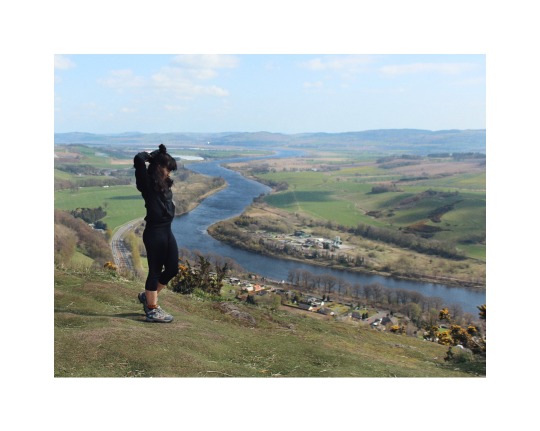
Having explored quite a few of Edinburgh’s hiking spots, I decided it was time to expand a little bit. Looking at day trips to be made by train, I came upon Perth, the fair city. The town looked cute, the ride was cheap and there was a nice hill nearby. It is a truth universally acknowledged that you get tired of slipping and falling on your ass eventually. A few days before, I had finally found a good, affordable pair of hiking boots in a charity shop, so it was time to test them out. Because everything in Britain closes at 5pm, we decided to walk around town first, checking out museums and gardens, and then get to the hill. By the time we started moving towards our main destination, we had already walked quite a bit. Kinnoull Hill stands 220m above the ground, looking at the River Tay and Friarton Bridge. Google Maps told us to go around the hill and start from the main avenue, but we are young and reckless, so we decided to follow the pedestrian signs instead, which led to a beautiful forest - and nothing else. After that first sign that said “Kinnoull Hill - 2.5km”, we were on our own. At some point, though, we managed to get back on track, crossing paths with a few people. Hiking is always different in different countries. The routes, the hikers and, of course, the landscape. Hiking in Scotland, the most striking thing to me is the people. They are insane. It’s not abnormal to see middle-aged men and women running up hills wearing nothing but basic gym clothes in the worst possible weather conditions. This time, what caught my attention was a mother and her young daughter, around 8 years old. They were carrying big shopping bags, and there were some pretty steep paths on the way. I was very sceptical about them reaching the top. But reach it they did. I said to Lew: “Look! They made it, and they’re carrying big shopping bags!”, to which he replied: “Yes, and you couldn’t lag behind, so you shoved three extra books in your backpack.” What can I say? Drummond would totally get me: In the middle of the road there was a Salvation Army. There was a Salvation Army in the middle of the road. The view from the top was incredible. Once again I had that humble sensation of smallness, that gratefulness for being able to touch and look at nature from such a privileged position. Nature is so much bigger than us. “What are men to rocks and mountains?” Of course we got lost on the way back, despite Lew’s impromptu impersonation of Aragorn, trying to guide us through the woods and reaching a giant fence instead. No biggie. We managed to break into private property, emerging miles away from where we intended to be, but we got out at last. The ride back to Edinburgh was magical, with an open view of the North Sea as we crossed Forth Bridge. I almost forgot about the giant blisters on my feet as I looked out the window. Later they would hurt like hell, of course, but at that moment nothing surpassed the infinite peace of the ocean.
17.04.19
#the book pessoa never wrote#writing#travel writing#personal writing#personal blog#writeaway#writers of tumblr#writers community#wip#kinnoull hill#perth#scotland#hiking#hiking tales#river tay
0 notes
Text
Business Trip to China - Advice
A couple of us from team BabyHub travelled to China to visit our factory, meet buyers and exhibit at the NECC in China
Our destination was Shanghai, on the east coast of China, and the surrounding provinces.
Preparation for travel to China includes:
Research: Up to date information https://www.gov.uk/foreign-travel-advice/china
Organise your visa. We very carefully checked the requirements and did these ourselves by post, rather than pay a visa arrangement service. They cost £175 each. You will need a letter of invitation from a Chinese business which must be written in a certain way. You can check this on visaforchina Your passport must have 6 months plus remaining. You will need photos, photocopies of your passports, copies of the invitation letter, forms to fill out (from visaforchina) a signed declaration, stamped addressed return Royal Mail envelopes and payment details page. All this must be sent with your passport by registered Royal Mail post to one of the three UK centres. We chose Edinburgh as it had the shortest delay. Allow at least 6 weeks. As a resident of the UK or British islands you will get a 2 year visa.
Download WeChat to your phone. This is the Chinese communication app

WeChat is still in development for use outside China but worth trying as EVERYONE uses it for EVERYTHING in China
Get a short translation into Mandarin Chinese of the main points of your product/business
Have flyers/business cards made which will ideally have one side in English and one side in Chinese including your Chinese paragraph/sentence and if possible, your WeChat QR code
If you use Gmail, get another email address! Generally people in China cannot easily access Gmail, Facebook etc. They can use Yahoo, so we used a Yahoo email address
Arrange meetings – best to allow some time following arrival to catch up on sleep. Organise for a translator/your agent to be at meetings
Organise your flights. If you’re taking connecting flights to a major airport, make sure your flights are “through travel” Then your luggage goes all the way through and if there are delays, you’ll be sent on the next available flight. This is one time when I didn’t arrange my flights online but went face to face with a travel agent
Organise accommodation Tripadvisor link Booking.com link We can recommend the Sofitel Shanghai Hongqiao for the NECC
Get some Yuan. Although it’s easy to get yuan using a debit card in cash machines, it’s handy to have some for your first taxi from the airport
Print out some notes showing your hotel’s full address in Chinese to show to taxi drivers
Check the weather forecast – Shanghai has 8 months of hot summer and when we went every day was 40 degrees
Your flight:
We travelled by Emirates which was very good, organized by British Airways. This was my first time travelling long haul. My tips include:

Wear clothes you can sleep in. Slip on shoes, casual exercise type clothes and layers.
Cabin baggage should include a main bag with your essentials for the trip – in case your hold luggage gets lost. This bag can be stowed in the overhead lockers. Then take another bag – laptop bag/shopper, which includes the things you might want on the plane – a book, reading glasses, iPad, phone, charger, tissues, small cosmetics, toothpaste, deodorant in a clear plastic bag, painkillers, passport and boarding passes.
Try to get an aisle seat. If you’re blocked in by someone who’s taken medication to sleep through the flight it’s bloody difficult to move them (as we discovered on the first leg) and you’ll need to get up to use the toilet/walk about
If you’re travelling with small children, you can put up the elbow rests and stretch out across the seats (if you can get the kids to go to sleep!) and lay the kids on top.
Be prepared for hole in the floor toilets at stopover airports
While in China:
On arrival at the airport, don’t spend ages in a queue of Chinese people waiting to go through customs. There will be a separate place for foreigners and you will have to look for the signs. Don’t worry if you can’t see them – an official will come and tell you but don’t spend 15 minutes in the wrong queue as we did!
You will need to present your details on an arrival card which you will have filled in on the plane. Keep back the part for departure for when you return (although there are spare cards on the return at the airport in case you have lost it)
Only use registered taxis. At the airport you may be approached by people offering to drive you to your hotel, but look for the taxi rank and queue there instead
Your hotel can summon taxis for you and give you a note with the name of your destination in Chinese
Be prepared for lots of unfinished building development. For example, although our hotel was close to the NECC it was not possible to walk there. There was as yet no way for a pedestrian to cross the river and the only access between the two was motorway flyover.
Travel by bullet train if going far – our experience was of spotlessly clean, comfortable trains on time. I had bought the train tickets on Ctrip, a few weeks before travelling. The first class seats get fully booked, so allow a few weeks if possible. You will be emailed a code, so take the print out to the train station for them to give you the tickets. Then you’ll have to queue for your platform. There was someone selling snacks on our train – vacuum packed fish and meat snacks. We chose the popcorn!
Be prepared for scary road trips. Expect traffic jams around the cities and people will drive on any side of the road in the provinces. When out walking you must look out for cars, scooters and bikes. It’s not unusual for them to go through red lights.
In some parts of China you may be the only Westerner around. Don’t be surprised if people stare and children ask to take selfies with you.
Be very polite, accept offerings with both hands, present your card with both hands
Ask for help! Once when lost we asked a local man for help. He drove us to our hotel! People called taxis for us.
Enjoy your trip!

Lu’an train station

The Bund, Shanghai

Yuyuan Gardens and bazaar

BabyHub exhibiting in the UK Pavilion at CBME

Lunch laid on by the factrory

Chinese nationals on holiday in Shanghai
Catherine Curtis, founder of BabyHub
1 note
·
View note
Text
Good Monday morning, my friends! I’m so glad you could drop by this morning. How was your weekend? Mine? It was fine … we went out for a bit on Saturday and it started pouring rain as soon as we walked out of the house, so after being drenched numerous times, we gave up and came home to the warm, dry, and furry house!
I must admit that I am anything but jolly this Monday morning, so please forgive me if the humour falls a bit flat. No, no … nothing wrong … just too much of … well, you know what. And perhaps a bit too much of this grey and gloomy winter. But, good news lies ahead, for according to the forecast, it is supposed to top 70° on Thursday! Perhaps if I can resume my daily walks, my humour will improve (not to mention the shape of my winter-worn body!).
Well, grab a donut and cup of coffee or tea (yes, rawgod, I remembered the tea this morning!), and let’s see if I can pull off a bit of a smile. Oh … by the way … today is National Napping Day, so let’s all do our patriotic duty and catch a midday snooze, eh?


The mayor is a …
I’ve written before about towns that have dogs, and even cats for mayors. The first one I had ever heard of was Rabbit Hash, Kentucky where the first elected mayor in Rabbit Hash history was Goofy Borneman-Calhoun, who was inaugurated in 1998 for a four-year term. Since that time, Rabbit Hash has never had a mayor that wasn’t a canine.
Goofy Borneman-Calhoun
Then there was Stubbs, the feline mayor of Talkeetna, Alaska, for nearly 20 years until her death in 2017.But I really think that the town of Fair Haven, Vermont, is the first in history to have elected a goat as mayor! Yep, folks, you heard right … a g-o-a-t.

Meet Lincoln, the new mayor of Fair Haven! With 13 votes, Lincoln eked out a victory over Sammie the dog, who received 10 votes. Talk about voter apathy! The town has approximately 2,500 residents, and only 23 of them bothered to vote? Sheesh!
Well, people might laugh at a goat for mayor, but heck, we live in a nation that elected a jackass for president, so what else can be said?
The price of beauty …
Now, I don’t go to a hairdresser … I trim my fringes and ends, and that’s the extent of my ‘hairdressing’. And we don’t take our kitties to the groomer … they get frequent brushings right here at home. So, I am not familiar with what hairdressers and pet groomers charge, but apparently groomers charge more than hairdressers do.
People must frequently complain about their groomer’s charges and ask why they charge more than the hairdresser down the street. Now, personally, if I were a groomer, my comeback would be, “Because we make your dog/cat look beautiful, but look what your hairdresser did to you!” However, that would likely cause me to go out of business quickly, wouldn’t it?
One groomer in Copenhagen, Laura Gedgaudaite , came up with her own witty solution, and placed this sign in the window of her shop …

Hmmm … makes perfect sense, don’t you think?
Elephant! Cover thyself!

Elephant! You’re on the wrong side of the road!
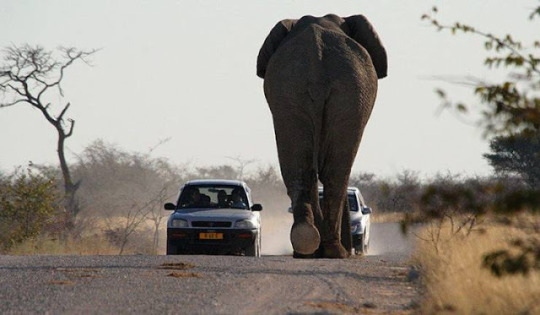
Road signs …
It has been a long time since I’ve included funny road signs in my Jolly Monday, so let’s take a look at a few new ones …
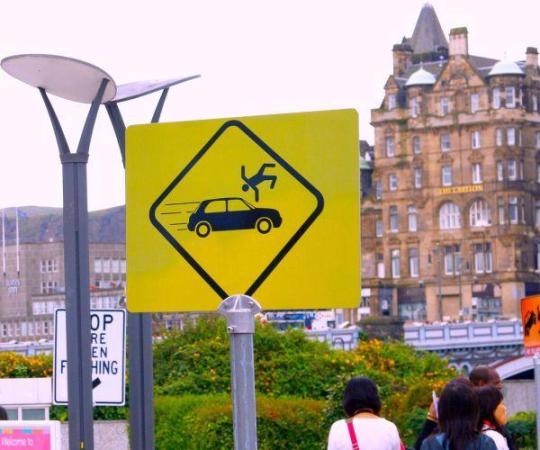
Edinburgh’s streets are old, narrow and extremely crowded, especially near Waverley Railway Station where this photo was taken. This can make road-crossing treacherous for drivers and pedestrians alike. But what exactly is this sign getting at? Is it warning pedestrians to be vigilant, or telling drivers to aim for the tourist?
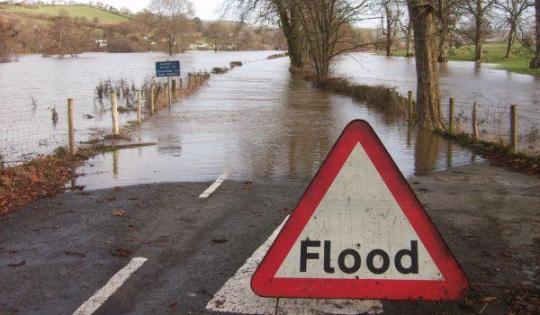
Ya think???

Seriously??? Somebody needs to go back to school!

Seems like sound advice.

Um … perhaps the sign painter had one too many?

Whatever for???

Well drat!
Anybody up for a couple of jokes this morning?
I’ve heard this joke before, but it never fails to make me chuckle …
Sherlock Holmes and Dr. Watson decide to go on a camping trip. After dinner and a bottle of wine, they lay down for the night, and go to sleep.
Some hours later, Holmes awoke and nudged his faithful friend.
“Watson, look up at the sky and tell me what you see.”
Watson replied, “I see millions of stars.”
“What does that tell you?”
Watson pondered for a minute.
“Astronomically, it tells me that there are millions of galaxies and potentially billions of planets.”
“Astrologically, I observe that Saturn is in Leo.”
“Horologically, I deduce that the time is approximately a quarter past three.”
“Theologically, I can see that God is all powerful and that we are small and insignificant.”
“Meteorologically, I suspect that we will have a beautiful day tomorrow.”
“What does it tell you, Holmes?”
Holmes was silent for a minute, then spoke: “Watson, you idiot. Someone has stolen our tent!”
And …
A Policeman Is Interrogating 3 Men Who Are Training To Become Detectives.
To test their skills in recognizing a suspect, he shows the first guys a picture for 5 seconds and then hides it. “This is your suspect, how would you recognize him?”
The first guy answers, “That’s easy, we’ll catch him fast because he only has one eye!” The policeman says, “Well…uh…that’s because the picture I showed is his side profile.”
Slightly flustered by this ridiculous response, he flashes the picture for 5 seconds at the second guy and asks him, “This is your suspect, how would you recognize him?”
The second guy smiles, flips his hair, and says, “Ha! He’d be too easy to catch because he only has one ear!”
The policeman angrily responds, “What’s the matter with you two?? Of course only one eye and one ear are showing because it’s a picture of his side profile! Is that the best answer you can come up with?”
Extremely frustrated at this point, he shows the picture to the third guy and in a very testy voice asks, “This is your suspect, how would you recognize him? He quickly adds, “Think hard before giving me a stupid answer.”
The third guy looks at the picture intently for a moment and says, “the suspect wears contact lenses.”
The policeman is surprised and speechless because he really doesn’t know himself if the suspect wears contacts or not.
“Well, that’s an interesting answer. Wait here for a few minutes while I check his file and I’ll get back to you on that.” He leaves the room and goes to his office, checks the suspect’s file on his computer, and comes back with a beaming smile on his face.
“Wow! I can’t believe it. It’s TRUE! The suspect does, in fact, wear contact lenses. Good work! How were you able to make such an astute observation?”
“That’s easy,” the third guy replied.” He can’t wear regular glasses because he only has one eye and one ear.”
Who doesn’t love to watch those adorable koalas in action?
youtube
Well, friends, that’s about all the humour I can muster this morning, and besides, some of you have to get to work, and some of you have to rake the snow off your roofs so the roof doesn’t cave in! Hey Hugh … here’s a little something to keep you warm while shoveling …

Remember, folks, spring IS on its way! There will soon be flowers! Keep those gorgeous smiles on your face this week, and spread a few of them around … some people have lost their own and it would be nice if you gave them one! Have a safe and happy week! Love ‘n hugs from Filosofa and Jolly!

Reset the counter?
Is It Monday Yet? Good Monday morning, my friends! I’m so glad you could drop by this morning. How was your weekend? 1,310 more words
#coffee &039;n donuts#elephants#four-legged mayors#funny road signs#jokes#pet groomer#Rabbit Hash Kentucky
0 notes
Text


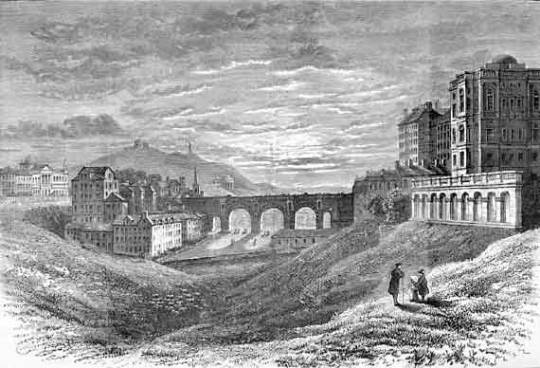
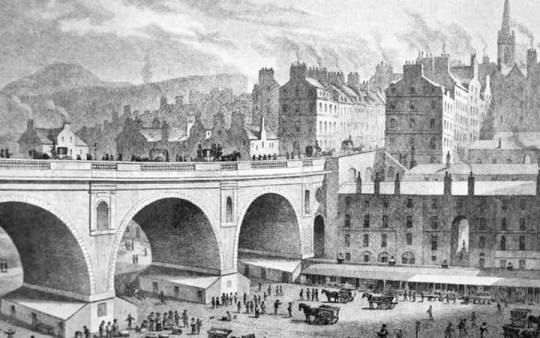



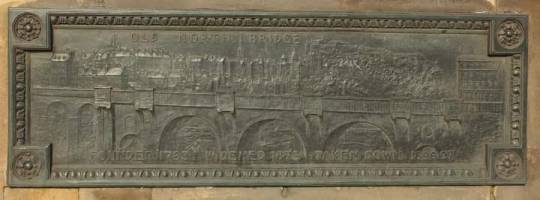

On October 1st 1763 the contract to build Edinburgh's North Bridge was signed.
Edinburgh in the 1700s was a very different city to the one we know today. The city boundary was restricted to the dramatic crag and tail feature which swept eastwards from the castle. Up to 35,000 people inhabited a space under a mile long making Scotland’s capital one of the most densely populated urban areas in the world at that time. The overcrowded population were crammed into crumbling tenements, many of them up to fourteen storeys high in order to make the most of the limited space. Make no mistake, Edinburgh at this point in it's history, was a skyscraper city, very few cities in the world had buildings the height of our capital!
Edinburgh’s nobility were often forced to accept the unthinkable and share dwellings with the lower classes. Change was not just desired, it was deemed an absolute necessity if the city was ever to move forward.
Plans to build a New Town to the north were discussed as early as the 1750s but without the means of connecting it with the rest of Edinburgh, it would be nothing more than a fanciful dream. Phase one required the draining of the ancient Nor’ Loch, a man-made stagnant body of water located in the area which we now term as Princes Street Gardens. Drainage began in 1759 and would continue up until the 1820s. Dry land at the east of the Nor’ Loch valley allowed for what was undoubtedly the most ambitious engineering project to have been built in the city at that point: An eleven-hundred foot long stone bridge. The North Bridge, as it would be named, enabled the New Town to become a reality. A brand new chapter in the city’s history was about to begin.
And so it was that the foundation stone of architect William Mylne’s North Bridge was laid on 1st October 1763 but it would be a further two years before any serious amount of progress was made. Nearing completion, the magnificent multi-arched bridge first opened to pedestrians in 1769 to much fanfare and excitement. However, the cheers would soon be emphatically silenced that summer due to a disaster of epic proportions.
On the evening of Thursday, 3rd August 1769 the side walls of the south abutment of the bridge suddenly gave way, causing a partial collapse of the structure and tragically claiming the lives of five people
Rescue efforts were recorded by newspaper the Caledonian Mercury which detailed the grim discoveries of bodies "buried in the rubbish, occasioned by the fall of the walls of the south abutment of the new bridge over the north loch".
Two of the bodies were identified as belonging to Mr Lawson, shoemaker, and Mr James Fergus, a local writer.
The Caledonian Mercury went on to mention that workers had been digging almost day and night since the collapse and that at least three to four others were feared to have shared the "same unhappy fate with the two already found".
A contemporary letter penned by a Darcy, Lady Maxwell recalls the evening of the collapse, which she had witnessed, writing
“The Lord, who is continually loading me with his benefits, has twice this day remarkable interfered on my behalf. In the evening he preserved me from broken bones to which I was exposed in a fall. A few hours after, when walking home from chapel, I witnessed a most melancholy scene occasioned by the falling in of the North Bridge. I… was within five minutes of passing over it… when almost in a moment, the greatest noise I ever heard (except on a similar occasion when I was remarkably preserved) filled the air."It seemed as if the pillars of nature were giving way. Instantly, the cry resounded “the bridge is fallen!”
A full inquiry followed and identified haste in construction and a poorly-calculated estimate regarding the depth of the foundations and sturdiness of the earth-filled abutments as the chief causes behind the disaster.
Rebuilding work demanded £18,000 (almost double the original £10,140 cost of the project) and the city would have to wait until 1772 before the grand reopening. The original North Bridge survived more than a century until the 1890s, when engineers devised an improved link that would allow for greater flow of traffic, this was at the time Waverley Train Station was being constructed.
Construction of the current steel bridge that we know today was completed in 1897 at a cost of £81,000., with the North British Railway Company contributing to a third of the cost.
A plaque recalling the founding and dismantling of the original North Bridge occupies a wall of the present bridge, which has now stood for roughly the same length of time as its predecessor.
The pictures show the evolution of the Nor Loch, I can’t find dates for them all, but you will see in the first one that the Loch is still not fully drained and very little signs of buildings on the North side, pic two shows buildings where the Balmoral Hotel now sits.
In the third pic there are signs of a Market where we now have Waverley Station, the street and buildings under the far side are now called Market Street. Pic four is dated around 1809, all the buildings you see on the left are now gone. On the top roght corner is what was The North British Train Station, the bottom of the picture you can see what is now known as “The Mound. Next pic is I guess from mid 19th century, still a long way from the construction of Waverley Station. Pic six shows the North Bridge being dismantling early 1896, and then "The Ceremony of Laying the Foundation Stone of the New North Bridge Edinburgh 25th May 1896, leading on to the commemorative plaque, which is from around the same time.
Finally is a pic of how the North Bridge looks in 2021, not much to see as it is in cladding while a multi-million restoration is taking place, the cost of refurbishing the bridge has soared from £22 million to £36m after the landmark structure was found to be in worse condition than expected. Last October the council issued a statement saying.
“Due to the nature of the construction of the bridge, full access behind the cast iron façade has not been available since it was constructed in 1897 and the last full refurbishment of this nature was in 1933. It has not been possible to properly inspect the hidden structural elements in almost 90 years.”
The briefing said testing had led to the discovery of “extensive issues” with the existing concrete bridge deck constructed in 1933.
I won't depress you with the latest details on when it will be finished, but at least it has opened to traffic now.
17 notes
·
View notes
Text
Is it time to design out city centre street parking?
Cycle parking at a typical Japanese supermarket.
The road space is this narrow Japanese street is shared by pedestrians and cyclists.
Cycling is a key mode of transport in narrow Japanese streets
In Oslo, parking spaces have been removed to make room for a bike lane and extended pavement. Image Credit: Seth Piper
Street parking removed to make space for planters in Oslo. Image Credit: Seth Piper
Former road space is now used for events in Oslo. Image Credit: Seth Piper
The provision of street parking creates congestion, air pollution and hinders sustainable transport. Is street parking in our city centres ever a good use of space, and what are cities doing to remove it?
Our city centre parking problem
The side of the road is a contested space most often used for parking of vehicles, or as a drop off space for deliveries and taxis. Sometimes it gets converted into bus lanes, and much more rarely into cycle tracks.
To help cities and towns measure the value of the kerb, Uber recently developed a tool to show how productive a kerb is. For example, if a kerb is used as a bus lane serving 200 people every hour, it is far more productive than as a parking space for ten cars and their owners over the same time frame.
Unsurprisingly the report found in favour of less space for parking and more space for taxi’s to pick-up and drop-off passengers, however at the heart of the report lies the fact that parking for vehicles in city centres is almost always the most inefficient use of valuable street space, especially when this could be used to increase capacity for people walking, cycling or using public transport.
Therefore it’s great to see cities increasingly asking the question ‘is it time to remove city centre street parking?’ and some taking bold steps to do so.
Oslo, the current superstar of parking reduction
In 2015 Oslo announced to the world its intention to ban cars from the city centre in just four years [1]. It subsequently backtracked a little but is on the way to effectively remove all motor vehicles except for those used for deliveries to businesses, people with disabilities, and residents living in the city centre (although 88% of residents living in the area do not own a car).
Ever since Oslo has been transforming its city centre. This was led by the removal of almost all parking spaces and the introduction of tolls to discourage driving. Removing parking has created space for public transport, walking and cycling. This is being carried out at a rate that shows cities can radically transform themselves in a short space of time.
Progress has been good – improvements have been made across buses and trams to improve services and speed up journeys, cycle infrastructure is being installed across Oslo in what was old parking space, and more space for walking and spending time enjoying the city have been created. It is hoped this will improve air quality, reduce carbon emissions and turn Oslo into a more attractive, liveable and importantly a more competitive city. The changes have had many vocal opponents, however, with elections around the corner in 2019, the majority of residents remain in support of the project.
People agree there are too many cars in most UK cities
Back in the UK most large cities are struggling to cope with the impact of too many cars – including congestion, air pollution and climate change. A recent RAC report found 65% of motorists think congestion levels have increased in urban areas due to more vehicles on the road [2].
And every transport planner knows the situation will get worse as the number of people and jobs found in our cities continues to increase. In Bristol just to maintain congestion at the current level, with expected population growth, the percentage of people commuting by car would need to reduce from 53% today to around 43% in 2036 [3].
The only way to reduce congestion in our cities is to make walking, cycling and public transport more attractive to people than getting in a car. Designing out on-street parking in city centres helps to create the space required for cycle tracks, buses and better pedestrian space, whilst reducing the incentive to drive. In England, for example, 50% of trips under two miles were taken by car [4] - many of these journeys could use other modes if they were attractive to people.
Is it possible to remove street parking across the entire city?
Oslo, however, is just removing parking spaces in the city centre. Are there examples of modern developed cities which have banned on-street parking at a citywide level?
In Japan, it is basically illegal to park on the side of the road unless there are signs to say it is allowed (which are about as common as cycling in Los Angeles). In fact in Japan when buying a car the customer will be asked for proof that they have a place to park before purchase.
Given the urban density of Japan most city residents do not bother owning a car and use bicycles and public transport networks to get about. Car parks are generally expensive and with typically few cars on most local roads it is easier and more attractive to walk or cycle for local journeys. In local neighbourhoods, bicycle modal share can be as high as 30% [5].
Walking and cycling in Japan is combined with extensive and efficient public transport systems for longer commutes – one in five of the 20 million rail commuters in Tokyo cycle to and from the station. These figures are impressive considering best practice dedicated cycle infrastructure is largely absent in Japan.
Where next for UK cities?
The UK is unlikely, at least in the short term, to ever become Japan but more and more UK cities are taking notice and enacting policies that make it harder to drive and easier to travel sustainably.
For example, the City of London has just announced plans to give pedestrians priority on half of the roads in the square mile [6]. Nottingham introduced the hugely successful workplace parking levy in 2012 to reduce parking in city centre workplaces and invest in public transport. Edinburgh is currently consulting on a range of measures that would help transform the city centre for people. And Bristol’s draft Transport Strategy is clear about the need to create funding for sustainable transport through the introduction of measures such as workplace parking levies, road user charging, or a clean air zone.
Importantly this isn’t a war on the motorist this is about making the city better for everyone – more attractive streets, places designed to improve our health and the environment, and globally competitive cities where people and business want to relocate to. These policies also benefit the people who drive - the reduction of often short and unnecessary journeys by car and van frees up road space and journey times for the remaining journeys that cannot use other modes.
So if we want to improve our cities both to live in and move around we must make walking, cycling and public transport more attractive than getting in a car. And one of the best approaches to this is to remove on-street parking and put our kerb space to more productive uses.
Find out more and take part in the Edinburgh: Connecting our city, transforming our places consultation (closes 12 November 2018)
Find out more and take part in the Bristol Transport Strategy consultation (closes 2 November 2018)
[1] The Guardian, 2015. Oslo moves to ban cars from city centre within four years https://www.theguardian.com/environment/2015/oct/19/oslo-moves-to-ban-cars-from-city-centre-within-four-years
[2] RAC, 2017. RAC Annual Report on Motoring 2017 https://www.rac.co.uk/report-on-motoring
[3] Bristol City Council. Draft Transport Strategy https://bristol.citizenspace.com/growth-regeneration/bristol-transport-strategy/user_uploads/bd10559---bristol-transport-strategy-2018_webv3-2.pdf
[4] DfT, 2018. National Travel Survey 2017. https://www.gov.uk/government/statistics/national-travel-survey-2017
[5] Copenhaganize, 2017. Copenhaganize Index 2017: Tokyo http://copenhagenizeindex.eu/09_tokyo.html
[6] The Times, 2018. City of London Corporation plans to pedestrianise half of the Square Mile https://www.thetimes.co.uk/article/city-of-london-corporation-plans-to-pedestrianise-half-of-the-square-mile-9p79qt3mq
Air Quality
Communities
Cycling in cities
Policy
Walking
from Blog https://www.sustrans.org.uk/blog/it-time-design-out-city-centre-street-parking via IFTTT
0 notes
Text
The council will ban all ‘A’ boards or other temporary adverts in the whole of Edinburgh from autumn this year.
The current restrictions only affect some streets such as the Royal Mile, Rose Street, Princes Street and Rose Street Lanes in the city centre, where it is left open to the trader to place any board in such a way that it ‘does not cause a hazard or obstruction to pedestrians’.
We took photos of some of the A boards on city centre streets on Thursday and you can see that the result in other city centre streets including the Royal Mile is not exactly uniform.
To bring this into line the council will ban A boards and other ‘temporary on-street advertising structures’ such as flags, to declutter the streets, something that they already committed to in the coalition deal signed last year.
Council Commitment number 27 sets out that the council will reduce street clutter to improve accessibility. The council believes that stronger and more consistent control of obstructions such as temporary on-street advertising will help them fulfil that commitment.
A dedicated enforcement team will be set up to enforce the ban for the first 18 months, covering the city in phases.This is a similar type of enforcement to that used to police trade waste in the city. There is a possibility that offenders will be fined with Fixed Penalty Notices but that would require a change in legislation. At first the offender will be required to remove the board within 21 days and if they don’t then the council will remove it, store it and bill the trader for their costs.
It has taken since March 2017 for the council to get to this stage, but now that they are ready to ban the boards, Transport and Environment Convener Lesley Macinnes said to The Edinburgh Reporter : “We have had a number of representations during the year from various groups about the problems that these boards cause. This includes those with various forms of disabilities or those using mobility scooters and those with children in buggies.
“People have to move in and out of structures that move all the time. They are never in the same spot which is difficult for those with visual impairment in particular.
“There have been attempts in the past by the council to control the use of these boards but this has eroded over time.
“Our intention is to ban them citywide. From my point of view there is a social justice aspect to this.People should be able to move around the city safely and securely no matter what method they use or whatever difficulties they may face.
“We know that we have support from external stakeholders on this matter. We do know that there is a degree of impact on businesses and we recognise that.”
In the report produced to guide the council in making this decision a meeting with the Federation of Small Businesses in February this year is mentioned. Businesses think that other street clutter should also be dealt with as well as the advertising boards as these are not the sole culprit.
It is recognised that signs, bollards, bins and bus stops also make up the clutter on our streets and the council is determined to minimise all of that.
In March a survey of businesses resulted in a majority supporting the council’s proposal to ban the boards completely.
Councillor Macinnes continued : “We need to find some ways to help support those businesses who will be genuinely impacted by the loss of advertising. We are looking at that and will report on it in the coming months.”
City Centre councillor and Vice-Convener of Transport and Economy, Karen Doran explained that city centre residents were very much in favour of this move. She said : “I am very much in favour of this too. It will make a huge difference.”
The conveners spoke as one when they explained that this will take a bit of culture change in the initial period, and the scheme will be reviewed after a year to 18 months.
Adam Wilkinson Director of Edinburgh World Heritage told us he is in favour too. He said : “A boards are already banned on the Royal Mile, but there are many practical reasons as to why a ban is sensible, particularly with regard togetting around the city for residents.
“There are plenty of other advertising opportunities for traders, for example using their own shop fronts. There are some really good examples of how to find places which are perhaps tucked away. I saw this in Dubrovnik where the entrances to alleyways have the same type of signs with the same writing for directions to businesses.”
Helpfully Adam provided us with a photo from Dubrovnik where you can see the type of sign he mentions.
A spokesperson for sight loss charity RNIB Scotland said: “We welcome this move by Edinburgh City Council to make the capital’s streets safer and more inclusive for residents and visitors with disabilities. It’s something our Street Charter has been pressing for throughout the country. While we, of course, want business to prosper, our streets should not be an obstacle course to be negotiated.
“A third of blind and partially sighted people surveyed by RNIB said they had been injured by pavement clutter when walking outside. Some felt so intimidated they ended up staying isolated in their homes. This is surely unacceptable.”
Robin Wickes, Vice Chairman of the Edinburgh Access Panel, said: “Pavement clutter is a significant obstacle for disabled folk in Edinburgh. For wheelchair users and vision impaired people in particular navigating our streets is a real challenge, especially since many of our pavements are narrow and busy with visitors. Banning A-boards will remove a major barrier and help disabled people enjoy equality of access to Edinburgh’s streets and pavements.”
The decision will be made at next week’s Transport and Environment Committee meeting on 17 May. You can follow this and other council meetings online.
Council to ban A boards citywide The council will ban all 'A' boards or other temporary adverts in the whole of Edinburgh from autumn this year.
0 notes
Photo
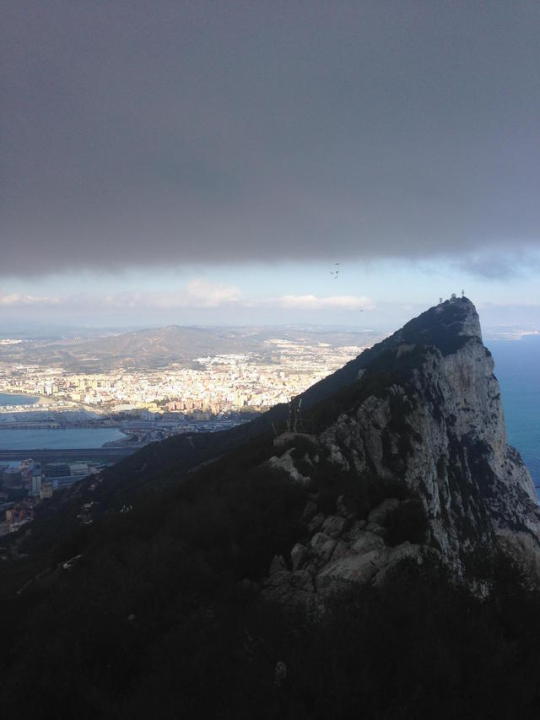


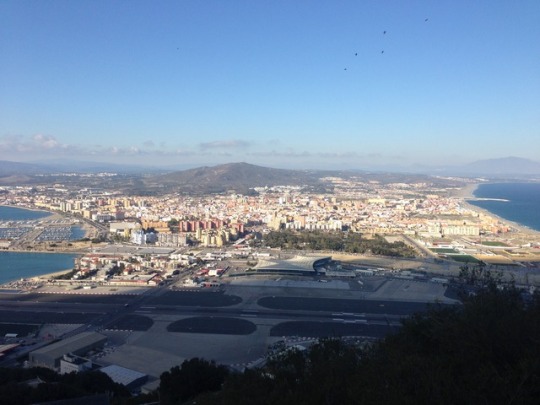
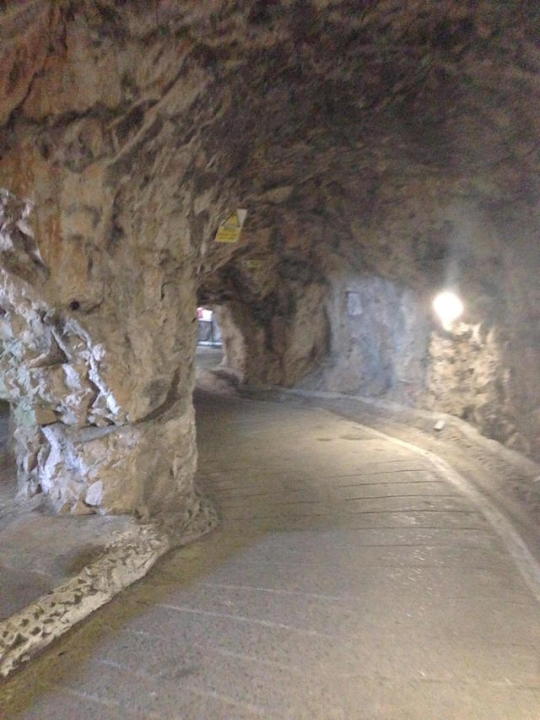
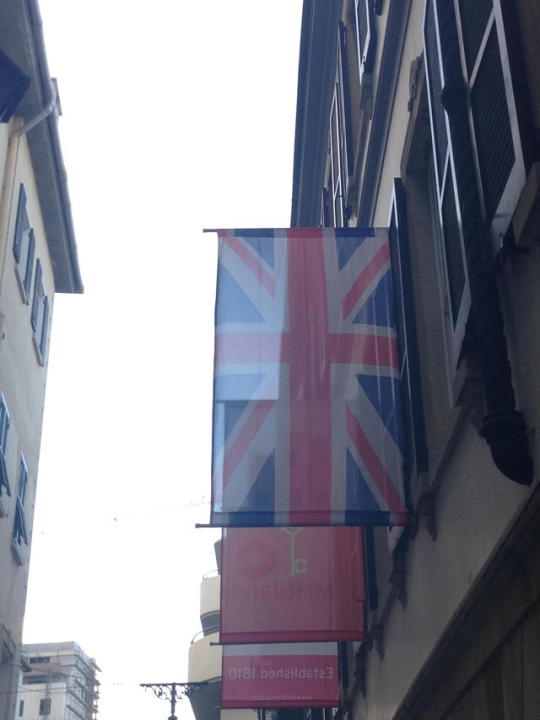

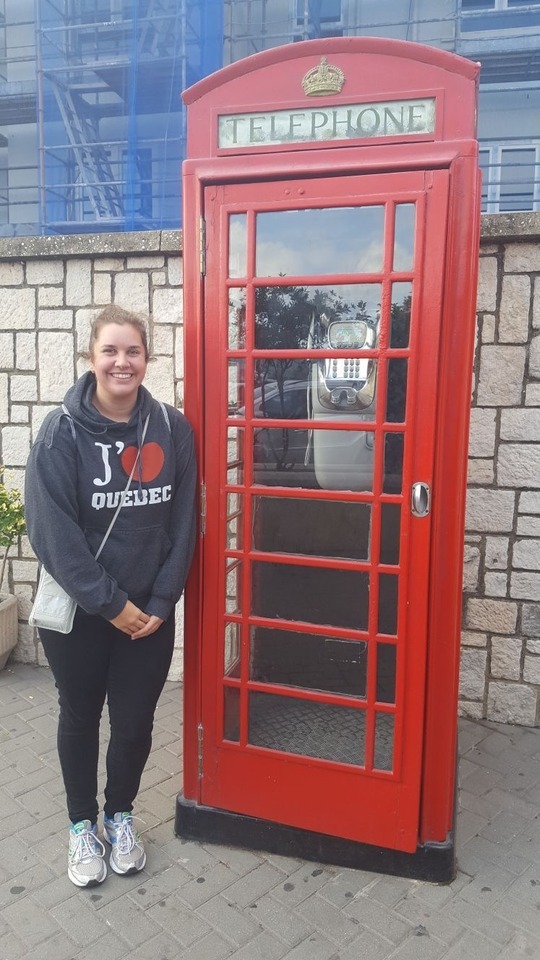


I know it’s been a while since you’ve last heard from me, but trust me when I saw that the last two weeks went from 0 to 60 pretty quickly! I wasn’t planning to post again until after I came back from Ireland because I had no major plans and was mainly studying or hanging around Tangier. That changed within a few days and then I got caught up getting ready for Ireland. So even though I am currently writing this 2 hours before I leave for my flight to Dublin, I needed to share some of my recent adventures with you!
First thing I want to share was a unique experience I got to have that involved the last two pictures you see on this post. Here in Tangier, there is a little gated building located near the bus station that I got to visit. This building is home to a school for the Deaf. It currently has about 110 students attending, all elementary age, and they learn things like reading, writing, and math as well as Sign Language. They use two versions of SL here in Morocco: Arabic SL and French SL (the first picture is the Arabic alphabet, the second French). Although I didn’t get to see any of the kids this time around because they were on vacation, I did get to tour the building and meet some of the staff working on the campus. I’m hoping to get the chance to go back sometime and have a day just to visit with the kids and see what their learning process is like.
The second thing I did was kind of a last minute decision. A few of my friends and I decided to plan out a day trip to Gibraltar two days before we wanted to go, but it ended up being really successful. Sunday morning, bright and early, we all taxied down to the ferry port and grabbed the first ferry from Tangier to Spain. When we reached Spain, we hopped on two different buses that took us straight to the border of Spain and Gibraltar. That left us to just walk across the border, being checked as we went, and we had made it. I actually got to set foot on British soil and let me tell you, I was very excited. From there, we started walking into the city to meet a shuttle bus that was going to take us to the cable car station for free (it came with these tickets we bought online). The bus driver was really nice and told us a lot about the history of the city as we drove. When we hit the cable car station, we got on and cruised up to the very top of the rock where there is a nature preserve that we had tickets for. The funniest part of the trip was when we reached the top cable car station. As we exited, we began to be surrounded by monkeys, big and small. They took an interest in my friend’s bag, grabbing onto it and then even going so far as to jump from the railing at her head to grab at her glasses. Of course, she was freaked out, but we couldn’t help laughing!
Once we had gotten past the first set of monkeys (they were all over the park), we headed into the nature preserve: a pleasant hiking trail that leads down the rock and has several stops along the way. The first stop was St. Michael’s Cave. Currently, the cave is used as a concert venue, but long ago it was underwater and was then used by the Spanish during the siege of Gibraltar. There’s also myths flying around that some of the monkeys got to Gibraltar from North Africa using an underwater tunnel that lead out through the cave (we later found out that most of the monkeys were there because Winston Churchill took them from North Africa and brought them to Gibraltar to strengthen the small population already existing there). St. Michael’s cave had some really cool rock formations and it was neat to see that even Queen Elizabeth II and the Duke of Edinburgh had been there years ago.
The next stop was the siege tunnels which was a long, underground rock tunnel that was hand dug by soldiers during the siege of Gibraltar. It had a ton of interesting information throughout it and some neat views of the city and of Spain from the holes where cannons fired out of. Outside the tunnels was a battery from the wars where three flags stood representing Gibraltar, the UK, and the EU.
From there, we continued the walk down until we reached our final stop: the Moorish Castle. As we walked in, we passed Queen Charlotte’s battery before continuing down the path and into the castle. There wasn’t much to see within the castle, but the view from the top was stunning and the castle itself was really neat to see. After leaving the castle, we made our way down into the city, getting a bit lost on the way, to find some dinner before we headed back to the buses. It was so nice to just walk through the very european looking city and hear the British accents around me (I even heard someone talking about their Grandad which made me excited because I, too, have a Grandad!) Once we had eaten, we began the trek back through the city towards passport control to get back to Spain for our bus home, but not before stopping to take some pictures of the airport tarmac. The interesting thing about Gibraltar’s airport is that the tarmac crosses right through the main road into the city. They have to have lights that signal to both pedestrians walking across and cars to tell them when a plane is flying in to land. Crazy!
Nevertheless, we made it back into Spain, got onto another 2 buses, and ferried back to Tangier. The whole day was a spectacular adventure and though we were tired afterwards, I’m so glad I went along. But now, it’s time for me to head off on one of my biggest adventures yet and I can’t even begin to say how excited I am. Check back in a little over a week for some exciting stories! Thanks for reading!
0 notes
Text
DISRUPTING THE PARK BENCH
BY BRIAN BARTH
Cities are getting “smarter.” But are they getting wiser?
FROM THE JULY 2017 ISSUE OF LANDSCAPE ARCHITECTURE MAGAZINE.
“Oh, no. My phone is dead. Better head to the park.”
Walk past the basketball court down at Anita Stroud Park, toward the little creek below, and you might find a gaggle of teens clustered around a very modern-looking bench that would seem more at home outside a coffee shop in Soho than in a tiny neighborhood park next to I-77 on the north end of Charlotte, North Carolina.
A pair of USB ports on a console on the front of the bench provides juice from the solar panel mounted at lap level between the seats. Who wouldn’t want to hang out at a bench like this? It certainly catches the eye of passersby. What these kids might not realize, however, is that this bench is watching them back. Underneath that solar panel is a small Wi-Fi enabled sensor that sends data back to an office building in East Cambridge, Massachusetts. Anyone who passes within 150 feet of the bench with a Wi-Fi enabled mobile device in their pocket is picked up by the sensor and registered as a unique visitor to the park. The sensors can’t access personal information from your phone—rather, they’re designed to pick up the unique ID associated with any Wi-Fi enabled device—but still, if you come back the next day, it knows it’s you again, not a new visitor. It may make privacy advocates squirm, but such data is very handy for park planners.
“The idea that we can learn about how many people are using the space, when they are there, and how long they are there, without having to literally send someone out there to count people, is very valuable,” says Monica Carney Holmes, the planning coordinator for Charlotte’s urban design office.
Since bolting the bench into place last October, Holmes’s office has learned that 85 percent of visitors to Anita Stroud are repeat visitors and that Tuesday, Wednesday, and Thursday nights are the most hopping. Outdoor Zumba and Tai Chi classes were scheduled for Saturday mornings last summer, Holmes says, but this summer they’ll program more events for weeknights to capitalize on the higher traffic.
Melissa Gaston, the president of the homeowners association of the Park at Oaklawn, an affordable housing community adjacent to Anita Stroud Park, has used the bench and seen its data—“I think it’s cool,” she says—but acknowledges that some residents are wary. “People think it’s Big Brother watching them, a 1984, George Orwell sort of thing. The city says [the bench] doesn’t identify individual people, though I’m sure they could use it for that at some point. So that has given some residents pause.”
The bench in Anita Stroud Park is manufactured by Soofa, a company founded in 2014 by three graduates of the MIT Media Lab. It is the first tangible sign of a plan to revitalize an area of Charlotte branded the North End Smart District, which includes Brightwalk, the Park at Oaklawn, and six other adjacent neighborhoods. The 3.6-square-mile district houses approximately 9,000 residents—primarily low-income and predominantly African American—clustered around a dilapidated warehouse district between the University of North Carolina campus and the downtown core, and it is facing heavy development pressure, especially now that the city’s light rail network is being extended into the area.
The intent is to redevelop the area with the sort of cutting-edge digital infrastructure that will attract new employers to set up shop, particularly IT companies and other enterprises that tend to draw on a young, upwardly mobile, tech-savvy workforce. Exactly what technological infrastructure will end up in the North End Smart District is an open question at this early stage, but these days most cities of any size are touting “smart city” technology, and this is Charlotte’s pilot effort. This term of art encompasses things like gigabit public Wi-Fi, parking apps instead of parking meters, streetlights that dim to save energy when no one is around, automated buildings that heat and cool each space only when in use, and trash and recycling bins that alert sanitation personnel when full.
Data-collecting street furniture (Soofa isn’t the only company making benches with sensors) is one of the first areas where the smart city concept has spilled over from buildings and infrastructure into green space, though one could argue that features such as free Wi-Fi in parks, GPS-guided interpretive walks, interactive light and water installations, and computerized controls of lighting and irrigation systems—increasingly common in the urban environment—also fit the bill.
Beyond benches, urban data collection is advancing rapidly. The Center for Urban Science + Progress (CUSP) at New York University, established in 2012 as one of the few research centers in the world with degree-granting programs in urban informatics, is home to the Sounds of New York City (SONYC) project, an initiative to map noise pollution—and ultimately to inform policies and design strategies to reduce it—through a network of sensors, augmented by information on noise conditions provided by citizens through an app. At the Urban Observatory, CUSP’s research facility in Brooklyn, specialized cameras and remote sensing equipment are mounted on top of the building to collect data on things like the heat island effect and sources of emissions that are invisible to the naked eye. A hyperspectral camera pointed toward the skyline around Prospect Park allows researchers to view the infrared light emitted by plants to analyze the health of tree plantings in different areas (plant stress is perceptible in the infrared spectrum long before it is visible to the human eye). This information is then cross-referenced with highly localized weather and air quality data to look for cause-and-effect relationships.
Perhaps the most ambitious urban informatics project in the country is in Chicago, where the city has begun the installation of 500 nodes, each housing 16 different sensors, plus a microphone and a camera, on utility poles inside what looks like a rocket-powered backpack from The Jetsons. Known as the Array of Things, a joint initiative between the City of Chicago, Argonne National Laboratory, and the University of Chicago, the sensors detect basic weather and air quality information, along with magnetic fields (useful for assessing traffic flow) and physical vibrations (from machinery and heavy trucks), among other measurements. The camera is connected to software that can parse vehicular, bike, and pedestrian traffic, giving an accurate count for each location. An early concept for the project included a sensor to detect wireless devices, similar to the Soofa benches, though the idea was abandoned owing to public opposition.
Some 42 nodes have been installed in Chicago so far, with the full rollout scheduled for completion by the end of 2018. A small number of nodes will soon be delivered to nine other participating cities in the United States, Mexico, and Europe as well. (The first data sets will be available at www.plenar.io, a global hub for open data, this summer.)
In Charlotte, Holmes says the city is planning more benches like the one in Anita Stroud Park—at bus stops, perhaps, and in civic plazas—as the North End Smart District is developed. By amassing reams of data on urban life, the theory goes, future planning and design efforts should be more accountable to conditions on the ground.
“The bench is part of a much larger conversation,” says Ed Krafcik, a former landscape architect who now works for Soofa. “By embedding technology into public infrastructure, a city is better able to respond to the evolving needs of citizens. Companies like IBM and Cisco have been talking about this for years, but the technology comes full circle when the data gathered is actually used by a parks department, an economic development agency, a planner, or a designer in a way that responds to how citizens actually use the city.”
Although the upshots of the so-called smart city movement are fairly clear—better data equals better and more transparent decision making—some people believe its potential pitfalls merit greater attention. Chris Speed, the chair of the design informatics program at the University of Edinburgh in Scotland, says a number of issues stem from the fact that “most of the smart city agenda is top down, and based on economics rather than social values.”
At top: A view toward Prospect Park, taken from a hyperspectral camera mounted atop the Urban Observatory in Brooklyn, part of NYU’s Center for Urban Science + Progress (CUSP). At bottom: Here the vegetation pixels have been extracted from the image; researchers at CUSP are analyzing such images to determine levels of plant stress in different locales around the city. Images by Gregory Dobler.
Speed is concerned that the smart city movement may contribute to the privatization of the public realm, rather than its democratization, citing the recent installation of a Nintendo gaming station in a prominent public plaza in Edinburgh as an example. By providing a venue for the company to promote its latest product, the city was able to extract revenue out of a space that ordinarily only consumes taxpayer dollars. But hanging a corporate logo over public space always brings up questions about whose interests are being represented. “Does the public even realize what sort of information is coming out of sensors in parks or lampposts, or from a video game kiosk?” Speed asks. “Where is the opportunity for their input?”
One roadblock to such input is the public’s general lack of understanding about mass-scale data collection and its impact on matters that are important to them. Most people have at least a vague notion that using the Internet means surrendering personal information to the Googles and Amazons of the world—that’s what all those legal disclosures that most of us click our agreement to without actually reading are about, right?—but at least we are asked for our consent, even if we have only a foggy idea of what we’re agreeing to. We just hope that the government is somehow keeping these corporations in check, and not collaborating with them to snoop on citizens.
Transfer the Internet privacy debate from cyberspace to public space, however, and another set of ethical implications arises. For example, there are no signs marking a 150-foot perimeter around Soofa benches warning pedestrians to turn back if they don’t want their devices registered. There is no way to opt out of being photographed by the Array of Things or recorded by SONYC microphones. Even if one is to trust the individuals and organizations behind such projects, what happens down the road when they are acquired by a multinational tech corporation, which quietly changes the wording of the privacy policy to enable other, more lucrative types of data collection from the sensors? As with any sexy new technology, the potential for mission drift is hard to forecast amid the glare of the initial hubris.
According to Soofa’s privacy policy, its sensors “observe the information being sent by mobile devices, including the device’s MAC address [media access control address, a unique identifier used to communicate with a wireless network, similar to an IP address], manufacturer, and signal strength. After receiving the nonidentifiable data sent by mobile devices, Soofa applies a cryptographic function to the MAC addresses to further anonymize them. Soofa analyzes the data it observes and provides aggregate anonymous information to its customers.” The privacy policy does not address whether Soofa might sell the data, stating only that it may “share data with research organizations both for and not for profit…to advance our research platform.” Krafcik maintains that selling data is not part of Soofa’s business model, though it’s not hard to imagine that other companies in the growing industry of urban data providers would want to engage in such commerce.
Digital privacy experts have long held that anonymous data, such as a cell phone’s identification number, is not as anonymous as one might think, even if encrypted. Timothy Yim, the director of data and privacy at the San Francisco-based nonprofit Startup Policy Lab, says “de-identification,” the process of stripping “personally identifiable information” (or “PII” in techspeak) from a data set does not necessarily prevent “reidentification” at a later date. “It is very hard to guarantee that any de-identification process is 100 percent foolproof,” he says. “And the more data that we have sitting in private repositories, like data aggregators and data brokers, the greater the likelihood that reidentification is possible.” Few people realize, he adds, that cell phone-detecting sensors are widely deployed by owners of large retail environments to analyze pedestrian activity. Spatial DNA, a Toronto-based firm that provides those services, is now using its PeopleFlow system to track consumer activity not just in malls, airports, and sports venues, but on public streetscapes as well.
Yim consults with local governments on the privacy implications of drone use and other smart city initiatives, and has followed the progress of the Array of Things closely. While the project has been well received in many circles, he says it has met with stiff pushback from some community members and data privacy experts. During the public comment period for the project, concerns were voiced about the surveillance capabilities of the units, including how future changes to the software and privacy policy would be evaluated, who will have access to the sound recordings and images collected by the units, and what would happen if a subpoena were issued for access to images and recordings in the course of a criminal trial.
Responses to 80 questions from the public were posted on the project website, including to the question of how law enforcement requests would be handled, on which the project team demurred, saying only that “the University of Chicago, as copyright holder of the data, [will] be responsible for responding to law enforcement requests.”
Yim counsels his municipal clients to err on the side of extreme transparency when rolling out data collection initiatives, and to draft privacy policies with exhaustive detail, imagining every current and future scenario that might result in a breach of public trust. The Array of Things’s initial privacy policy was troublingly vague and thin on detail, he says, though it was beefed up considerably following a string of negative news stories—“Array of Things Sensor Policy Leaves Law-Enforcement Question Open,” exclaimed the Chicago Tribune—that chronicled a bout of public backlash last year.
But he applauds the project for one privacy practice that he says could have been better publicized in the initial rollout to help allay the public’s Big Brother fears: raw images and recordings are processed within each node, so that only numerical data—such as ambient noise levels, pedestrian and traffic counts, and the presence of standing water—is transmitted to the project server (the Array of Things privacy policy states that raw image and audio data will occasionally be collected to improve instrument calibration, but will only be reviewed by select personnel under “strict confidentiality obligations”).
“It is incredibly difficult to implement traditional privacy concepts like notice and consent in the context of drones or sensors in public space,” Yim says. Planners and landscape architects, he adds, can play a role in helping communities define “the balance between the benefits and the potential privacy risks, as well as how to mitigate some of that risk.”
The line between collecting data for a valid public purpose and the unreasonable surveillance of private citizens can be tough to tease out. Beyond clear dangers like hacking and data breaches, and underlying concerns about private corporations somehow benefiting from data collected on the taxpayer’s dime, are existential questions about privacy as a basic human right. Helen Nissenbaum, a fellow at NYU’s Information Law Institute and a privacy rights activist, says she is “horrified” at the lack of government oversight regarding the so-called Internet of Things as it expands into public space.
“The notion of public space where people can walk around and not be surveilled, not be held accountable for what they do, is really a diminishing idea—unless we pursue the idea of smart cities with our eyes open and a great understanding of what we’re doing,” Nissenbaum says. “We need better policies that control how data flows from one party to another and who can get access to what data under what conditions. I personally believe that if someone has a bunch of information about me, it’s like the sword of Damocles—they have power over you.”
According to Yim, very few laws, at any level of government, address what sort of data may be collected in public space, though he says this is likely to change as the legal system catches up with the technology. Reform at the political level notwithstanding, both he and Nissenbaum encourage anyone in the position of recommending or procuring such data collection systems to delve into the ways the systems work and what the ramifications of their use are. Cell phones, for example, transmit several different signals, which have different security implications, says Nissenbaum, who suggests a few basic questions to ask: What happens to the data once it is registered? How long is the information going to be stored? Will it ever be shared with anybody else? Can the purchaser of the system conduct an audit to make sure it is working as the company claims it is?
“People say things like, ‘I don’t care; I’ve got nothing to hide,’” Nissenbaum says. “But privacy is not about having some guilty secret that you don’t want other people to know. If people understood how the sharing, aggregating, and analysis of data works, it would throw a lot of those assumptions out the window. Hopefully it won’t be too late by the time we as a society realize this.”
Krafcik is well aware of the skepticism regarding “Big Data” and what corporations and governments might be doing with it. But he argues that Soofa benches are potentially a means to build public trust around urban data collection. “The goal is to humanize the Internet of Things in a civic context. When sensors are hidden in light poles and electrical boxes and other places that are not tangible for citizens, it can create a contentious relationship with the technology. Rather than thinking it’s all about creating a better experience for them in the city they live in, it’s like, why is the city spying on me? Taxpayers are financing a lot of these innovations, so it becomes hard to advance if it’s not in a form they can connect with.”
Each node contains 16 sensors, plus a microphone and camera, to monitor urban conditions including noise and pollution levels. Image by Rob Mitchum.
Whatever the merits of Soofa’s approach, it has drawn interest from scores of municipalities, along with a few technology giants. Verizon and Cisco signed on as partners for Soofa’s first pilot project, a dozen benches scattered about Boston. The benches have now been installed in 65 cities and five countries, and the company’s second product launch—solar-powered, Wi-Fi enabled E Ink signs (the same technology used in a Kindle) used for wayfinding and public service announcements—is under way in Boston. The signs, which do not include sensors at this time, are used to communicate everything from transit updates and job postings from nearby businesses to notices for town hall meetings and Boston Mayor Marty Walsh’s Twitter feed.
In Charlotte, the question of who benefits from smart city technology takes a social equity cast. Rachel Stark, ASLA, a landscape architect in the city’s urban design office who is spearheading community planning efforts for the North End Smart District, says it was quickly apparent that the latest whizbang technology is not exactly a high priority for many residents in this part of the city, where the median income is around $25,000, one in six properties is vacant, the violent crime rate is four times the Charlotte average, 28 percent of residents are unemployed, and 27 percent of households lack a car. The appeal of a phone-charging bench has its limits in a community where not everyone has a smartphone in their pocket.
“Is this going to be helpful, or is it just going to raise property values and drive people out?” Stark asks. “The most important question at this point is, how can we be smart about our community engagement? Language is so important. As landscape architects, it is very important to understand that, yeah, we may be the educated professional, but that doesn’t make us better. It makes the situation worse if we don’t actually communicate in a way that the people we’re talking to can understand. So we’ve come to local community groups since the beginning to find out the best ways to get their constituents engaged in the discussion.”
Melissa Gaston and her husband, Darryl Gaston, were among the first community members consulted. “I embrace the smart city concept, but I cautioned the folks from the city that because of things we have experienced historically in Charlotte, residents here are a little apprehensive about the government coming in and telling us what they want to happen,” says Darryl, a third-generation resident of Druid Hills—one of the eight neighborhoods within the North End Smart District—and the president of its neighborhood association (the couple, who met at a community organizing workshop, maintain residences in their respective neighborhoods). “We are already experiencing all sorts of growth pains—predators knocking on our doors, saying, ‘I know that your taxes are in arrears, but if you sell me your house you don’t have to worry about the city taking it.’”
Based on this feedback, city staff is taking an incremental, bottom-up approach with the Smart District plan. The installation of the Soofa bench last year was part of the No Barriers Project, a prelude to launching the Smart District that entailed a six-month series of events in Anita Stroud Park put on by the tech-centered design firm IDEO, the Parsons School of Design, and the Mecklenburg County Park and Recreation Department. Activities included whimsical evening events, like playing with “light boxes”—lightweight chair-size cubes with an illuminated dry erase surface for people to write out their thoughts about the community (or whatever was on their mind)—along with barbecues and dance parties.
Stark says the social capital generated by the No Barriers Project is now feeding into a series of community input sessions about how the Smart District plan could support the immediate needs of residents. One idea that’s arisen is to subsidize weatherization improvements and smart thermostats for the aging housing stock in the area. Another suggestion, which came up in discussions about impediments to mobility, is for the city to create a sort of banking app for residents who have a smartphone but not a bank account or credit cards. Uber and Lyft don’t accept cash, so the app would allow users to load money onto their account at a convenience store, for example, and then pay for ride share services or for municipal transit using a phone.
One Smart District project already under way is a workforce development program to train adults in technology skills to help bridge the digital divide, Stark says. A program for high school students will provide two weeks of training in a field of technology, followed by a four-week internship working in that particular industry. “The idea is that by having the training and providing localized jobs, people don’t have to travel as far, their incomes are hopefully a little higher, and they have a few more options in life,” she says.
The Gastons plan on holding them to it. They recently formed the North End Community Coalition to unite the various community groups in the area against the pitfalls of gentrification and ensure that the upcoming investments in technology are harnessed for the interests of current residents. Consensus in the community is in support of the Smart District plan, says Melissa Gaston, as long as it continues to be on the community’s terms. “There are some things that the city has come to us and said they wanted to do and we said, ‘No, we are not on board with that.’ But they’ve addressed some of our initial concerns. We’ve been left out of a lot of good things going on in the city in the past, so I recognize the value of being part of this.”
Brian Barth is a Toronto-based journalist with a background in urban planning and landscape design.
from Landscape Architecture Magazine https://landscapearchitecturemagazine.org/2017/07/17/disrupting-the-park-bench/
0 notes
Text
Bike Life 2017: what can we expect?
In 2015 people told us they wanted improvements to safety and greater investment, we would expect this still to be the case in 2017
Bike Life is gearing up to report on cycling progress in seven cities for the second time in November 2017. In the run up to these reports we explore what has changed in our cities and what this might mean for cycling.
Through our Bike Life project we are collaborating with seven cities in the UK – Belfast, Birmingham, Bristol, Cardiff, Edinburgh, Greater Manchester and Newcastle – to report every two years on progress towards making cycling an attractive and everyday means of travel.
Our Bike Life reports initially kicked off in 2015, with the 2017 Bike Life reports due to be published in November. Each set of reports is an assessment of cycling development including the infrastructure provided, travel behaviours, attitudes towards cycling and the economic, health and environmental benefits people on bikes bring to our cities.
What did Bike Life find out in 2015?
In 2015, Bike Life found a significant public appetite for cycling. Across the seven cities almost a third of people who didn’t ride a bike would like to and two-thirds of people believed that more people on bikes would make their city a better place to live and work.
This potential was held back by a lack of provision for cycling. 79% of respondents in our cities agreed that cycle safety needed to be improved, and three quarters thought more investment should be spent on cycling.
Two years have passed and our cities across the UK have been working hard to make progress on cycling. So what has happened since 2015 in these cities that is likely to have had an impact?
The world and our cities are evolving rapidly
No one can deny a great deal has changed since 2015. Back then no one anticipated Brexit would be happening, or another UK General Election in 2017.
This has and will continue to have a significant impact as the UK Government’s attention is focused on the evolving challenge ahead in exiting the EU. Other aspects have broadly stayed the same - austerity, especially in the public sector, continues to exist with further budget cuts for most local authorities over the next few years.
In England, we have seen the rise of Combined Authorities and devolution, nowhere more so than in Greater Manchester, where Andy Burnham recently appointed Chris Boardman as Walking and Cycling Commissioner.
We have also seen the launch of the first ever Cycling and Walking Investment Strategy. However this comes at the same time as dedicated funding for cycling has fallen, with a cliff edge on the horizon for Bristol, Birmingham, Newcastle and Greater Manchester as their Cycling City Ambition Grants finish in April 2018. These grants have been instrumental in many of the ambitious projects built across these cities, including cycling routes segregated from traffic and pedestrians, such as Greater Manchester’s Oxford/Wilmslow Road, John Dobson Street in Newcastle, Baldwin Street in Bristol and the two proposed Superhighways in Birmingham.
In Wales the introduction of the landmark Active Travel Act has yet to be matched with appropriate funding, meaning investment on the ground is at best patchy. Cardiff has bold ambitions encapsulated in its city plan Capital Ambition and in its draft Cycling Strategy, but up until now has had to rely upon developer contributions for much of the progress seen on cycling infrastructure in the past two years.
Belfast has completed one major Greenway in the east of the city and introduced several segregated on-street cycling routes in the city centre at Alfred Street, Durham Street and Queen Street. Plans have been drawn up for a Belfast Bicycle Network, however, with no Northern Ireland Assembly deal in sight, and therefore no government, making progress and building on these projects is extremely difficult.
Scotland is undergoing a resurgence. The recent announcement from the Scottish Government to double investment in walking and cycling to £80m per annum from 2018/19, equivalent to £15 per head, is especially welcome and is an example for the rest of the UK. In Edinburgh the city council has kept its promise of dedicating 10% of its transport budget to cycling. This investment has meant Leith Walk’s segregated cycle lane is almost finished, significant parts of the city have recently become 20mph zones and more plans are in the pipeline, including the Roseburn to Leith segregated cycle path. Edinburgh is now in a good position to continue momentum over the next few years.
What is this likely to mean for Bike Life 2017?
These trends and others will have an impact on the development of cycling in our cities. So what are we expecting to see from the Bike Life reports in 2017?
Firstly we think it’s safe to say that Bike Life is a long-term project and transforming a city takes time – even Copenhagen didn’t happen overnight and it took decades to reach its +40% cycling modal share.
We have been working hard to develop what Bike Life can tell us since 2015, including much more detail on the impact, showing the benefits from people getting on bicycles for their health, air quality, congestion and the economy.
Alongside this we have introduced new questions to better understand people’s perceptions about how cycling can solve big issues like keeping our cities moving and pollution, and what people would like more investment for cycling spent on.
The early indications of all of this is shaping up for a really exciting set of reports with a clear message from the public.
All of our cities will have made some progress towards improving cycling since 2015, many of whom have done so in challenging conditions with limited funding and resources to do so. At the same time however it is increasingly clear that expectations from the public are further ahead of what is happening on the ground. People told us they wanted improvements to safety and greater investment in 2015 and we would expect this still to be the case.
Some great schemes have been built in many of our cities over the past two years but where they exist they are still the exception rather than the norm. Now that people have seen what good infrastructure looks like they inevitably and rightly want more of it.
Sign up for more information and updates on Bike Life
Sign up for The Network, our monthly email for professionals
Bike Life
Cycling in cities
Economy
Health
Liveable cities
from RSSMix.com Mix ID 8239590 https://www.sustrans.org.uk/blog/bike-life-2017-what-can-we-expect via IFTTT
0 notes